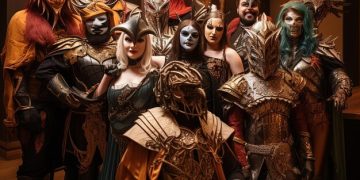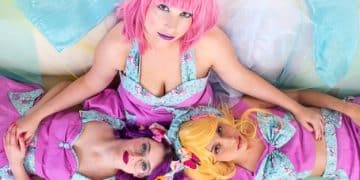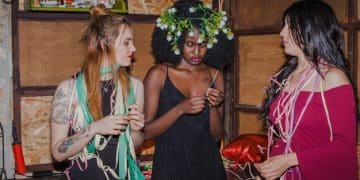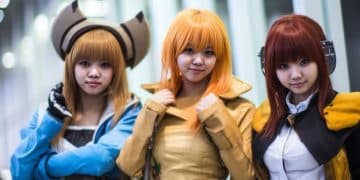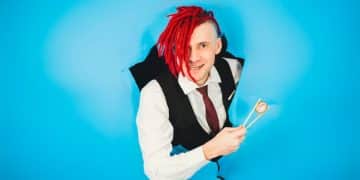Cosplay Photography: Capturing the Essence of Geek Culture
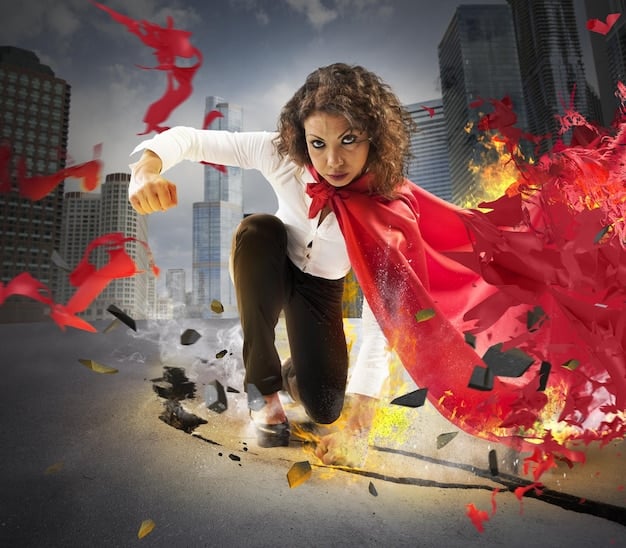
Cosplay photography captures the artistry and dedication of cosplayers by using creative techniques to bring fictional characters to life through stunning visuals.
Dive into the captivating world of cosplay photography, where imagination and artistry blend to immortalize beloved characters. This guide explores how photographers and cosplayers collaborate to create stunning visuals that capture the essence of geek culture.
What is Cosplay Photography?
Cosplay photography is more than just taking pictures of people in costumes. It’s a specialized genre of photography that focuses on capturing the artistry, creativity, and dedication of cosplayers. It’s about bringing fictional characters to life through visual storytelling.
Cosplay photographers work closely with cosplayers to create images that reflect the character’s personality, story, and overall aesthetic. This often involves elaborate planning, creative posing, and extensive editing.
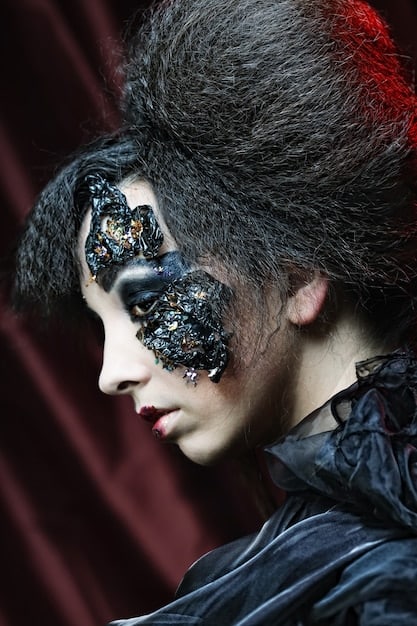
The Art of Character Interpretation
One of the key aspects of cosplay photography is the ability to interpret and represent a character accurately. This requires a deep understanding of the source material, whether it’s a comic book, video game, anime, or movie.
Photographers need to consider the character’s personality, motivations, and iconic poses. They must also ensure that the costume, makeup, and accessories are as accurate as possible to the original design.
Essential Equipment for Cosplay Photography
Having the right equipment is crucial for capturing high-quality cosplay photos. Here are some essential items:
- Camera: A DSLR or mirrorless camera with manual settings is ideal.
- Lenses: A versatile zoom lens (e.g., 24-70mm) and a prime lens (e.g., 50mm) are great options.
- Lighting: External flashes, reflectors, and softboxes can help control lighting and create dramatic effects.
- Backdrops: Portable backdrops or seamless paper can be used for studio shoots.
Cosplay photography is a unique blend of technical skill and artistic vision, where understanding the character is just as important as mastering the camera settings.
Planning a Cosplay Photoshoot
A successful cosplay photoshoot requires careful planning and coordination between the photographer and the cosplayer. This involves discussing the character, location, and overall vision for the shoot.
Good communication ensures that both parties are on the same page and that the final result accurately reflects the character and story.
Choosing the Right Location
The location of the photoshoot can greatly impact the overall look and feel of the images. It’s important to choose a location that complements the character and story.
For example, a forest setting might be perfect for an elf or fantasy character, while an urban environment might be more suitable for a superhero or cyberpunk character.
Creating a Mood Board
A mood board is a visual tool that helps both the photographer and cosplayer visualize the desired aesthetic for the shoot. It can include images of the character, location, lighting, and poses.
- Gather reference images from the source material.
- Include examples of lighting and color schemes.
- Add images of poses and compositions that you like.
- Share the mood board with the cosplayer for feedback.
Careful planning of a cosplay photoshoot, from location scouting to mood board creation, is essential for capturing stunning and character-accurate images.
Mastering Lighting Techniques
Lighting is one of the most important elements of photography, and it’s especially crucial in cosplay photography. Proper lighting can enhance the character’s features, create mood, and add depth to the images.
Understanding different lighting techniques can elevate your cosplay photos and make them stand out.
Using Natural Light
Natural light can be a great option for cosplay photography, especially if you’re shooting outdoors. The golden hour (the hour after sunrise and the hour before sunset) provides soft, warm light that can be very flattering.
However, natural light can be unpredictable, so it’s important to be flexible and adapt to changing conditions.
Working with Artificial Light
Artificial light provides more control over the lighting conditions and can be used to create specific effects. External flashes, strobes, and softboxes are commonly used in cosplay photography.
- Use a softbox to diffuse the light and create a softer, more flattering look.
- Use a reflector to bounce light and fill in shadows.
- Experiment with different lighting angles to find the most dramatic effect.
Mastering lighting techniques is essential for creating stunning and professional-looking cosplay photos, whether using natural or artificial light.
Posing and Composition Tips
Posing and composition are key elements in creating visually appealing and engaging cosplay photos. The pose should reflect the character’s personality and the composition should draw the viewer’s eye to the subject.
Effective posing and composition can transform a simple photo into a dynamic and captivating piece of art.
Directing the Cosplayer
As a photographer, it’s your job to direct the cosplayer and help them find the best poses. Provide clear and concise instructions, and be patient and encouraging.
Encourage the cosplayer to experiment with different poses and expressions, and don’t be afraid to try something new.
Creating Dynamic Compositions
Composition refers to the arrangement of elements within the frame. A strong composition can make a photo more visually appealing and engaging.
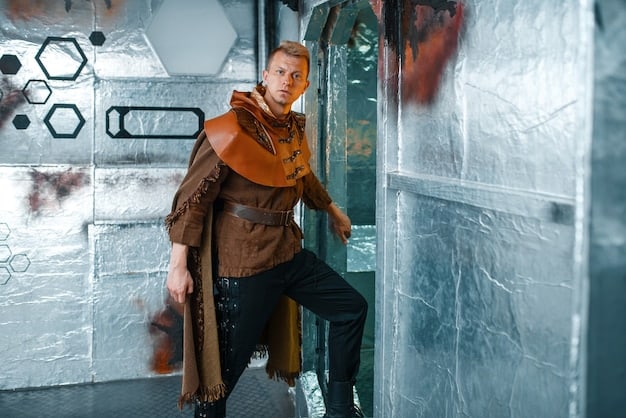
- Use the rule of thirds to create a balanced composition.
- Use leading lines to draw the viewer’s eye to the subject.
- Experiment with different angles and perspectives.
Posing and composition are critical components in crafting visually compelling and engaging cosplay photographs, helping to tell a story and capture the essence of the character.
Post-Processing Techniques
Post-processing is an essential part of cosplay photography. It allows you to refine the images, enhance colors, and remove distractions. Software like Adobe Photoshop and Lightroom are commonly used for post-processing.
Effective post-processing can elevate a good photo to a great one, adding the final touches that bring the character to life.
Basic Adjustments in Lightroom
Lightroom is a powerful tool for making basic adjustments to your photos. Here are some common adjustments you can make:
Adjusting exposure, contrast, highlights, and shadows to create a balanced image is often the first step in post-processing.
- Correcting white balance
- Adjusting tone curve
- Applying lens corrections
Advanced Editing in Photoshop
Photoshop offers more advanced editing capabilities, such as retouching, color grading, and adding special effects. These can be used to enhance the character’s appearance and create a specific mood.
Advanced editing in Photoshop can transform a cosplay photo, adding the final touches that complete the artistic vision.
Building Your Cosplay Photography Portfolio
Building a strong portfolio is essential for attracting clients and showcasing your skills as a cosplay photographer. Your portfolio should include your best work and demonstrate your versatility.
A well-curated portfolio is your calling card, showing potential clients what you can bring to a cosplay photoshoot.
Showcasing Your Best Work
Your portfolio should only include your best work. Be selective and choose images that demonstrate your skills and creativity.
High-quality images are essential for creating a professional-looking portfolio.
Networking and Promotion
Networking and promotion are crucial for building your career as a cosplay photographer. Attend conventions, connect with cosplayers online, and share your work on social media.
Building relationships within the cosplay community can lead to new opportunities and collaborations.
| Key Aspect | Brief Description |
|---|---|
| 📸 Character Interpretation | Understanding and accurately representing characters in photos. |
| Location Scouting 🗺️ | Choosing the right location to match the character’s world. |
| 💡 Lighting Mastery | Using natural and artificial light to enhance the photo. |
| 🎨 Post-Processing | Refining images with software like Photoshop and Lightroom. |
FAQ
▼
A DSLR or mirrorless camera, versatile zoom lens, prime lens, external flashes, reflectors, and portable backdrops are crucial for cosplay photography.
▼
Choose a location that complements the character and story. For instance, a forest suits fantasy characters, while an urban setting works for superheroes.
▼
Natural light during the golden hour is excellent, but artificial light such as flashes, strobes, and softboxes, provides more control and dramatic effects.
▼
Post-processing is essential for refining images, enhancing colors, and removing distractions, elevating the photo to a professional level.
▼
Showcase your best work, demonstrate versatility, maintain high-quality images, and engage in networking and promotion within the cosplay community.
Conclusion
Cosplay photography is a captivating art form that combines technical skill with creative vision. By mastering character interpretation, planning photoshoots effectively, understanding lighting techniques, perfecting poses and compositions, and utilizing post-processing, photographers can capture the essence of geek culture and create stunning visuals that celebrate the artistry of cosplay.

